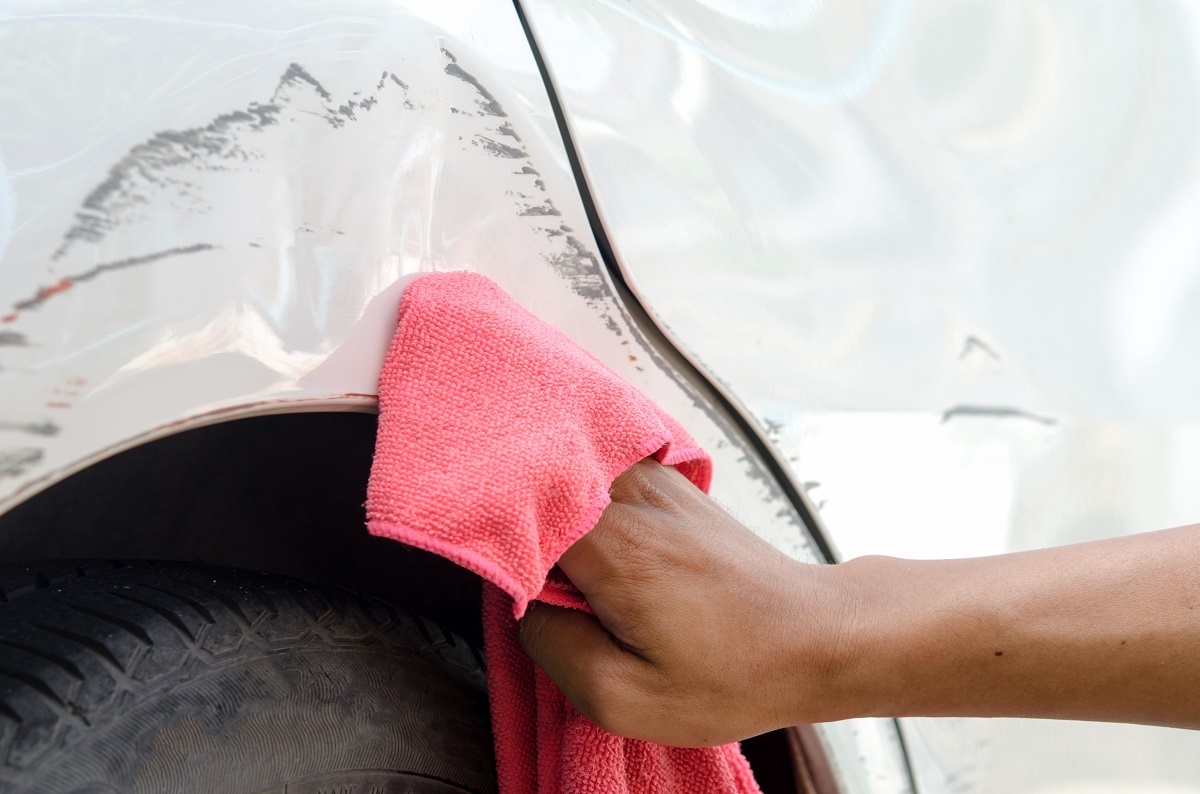- Regular and mindful cleaning protects your car’s exterior from dirt and environmental elements.
- Mindful parking, such as avoiding high-traffic areas and investing in a quality car cover, can help prevent scratches while parked.
- Applying wax every three months creates a protective barrier against scratches and keeps your car looking newer for longer.
- Promptly addressing scratches with proper cleaning and repairs can preserve the integrity of your car’s exterior and maintain its value.
- Investing in high-quality paint protection provides superior assurance against scratches and other damage.
Embracing the exhilaration of purchasing a new car often comes with the innate desire to maintain its pristine condition. Every curve and gleam underlines your automotive achievement, and naturally, you’d want to safeguard its exterior from the inevitable dangers of the road. Proactive measures are paramount in an environment where anything from a loose pebble to harsh weather can compromise your vehicle’s appearance. This comprehensive guide ensures you’re well-equipped with practical steps.
1. Regular and Mindful Cleaning
Your car faces environmental exposure every day, and substances like dirt, sap, and bird droppings can cling to the paint, leading to damage over time. Regular cleaning is your first defense line. However, the devil is in the details. Using a soft, clean sponge or mitt, start by rinsing the car to remove larger particles that can scratch the paint.
Then, with a car-specific cleanser, wash from the top down in sections, rinsing the sponge frequently to avoid dragging debris across the surface. Avoid washing in direct sunlight to prevent water spots, and consider using a two-bucket method—one for clean, soapy water and one for rinsing the dirty sponge.
2. Mindful Parking

Ironically, a significant portion of potential risks occurs when your car is stationary. Parking areas and garages are hotspots for scratches—from careless drivers to falling objects. When parking in public, opt for a spot away from heavy traffic, reducing the risk other vehicles pose. Open spaces might require a further walk but offer peace of mind.
If garage parking isn’t available at home, try to find a shaded area or invest in a high-quality car cover to protect against environmental factors. Remember, tree-lined spots can safeguard against sun damage but invite sap and possible bird stains, requiring prompt cleaning to avoid paint damage.
3. Wax On, Damage Off
Adding a layer of car wax following your vehicle’s wash isn’t just for an extra shine; it provides a protective barrier against scratches. With its smooth finish, wax allows environmental risks to slide off, significantly reducing the risk of abrasions. It’s advisable to wax your car every three months or so.
Applying wax requires a gentle touch and patience. Use a soft foam applicator pad, employing circular motions for an even coat. After the wax dries, utilize a microfiber cloth to buff the surface lightly. This additional layer of defense keeps your car looking newer for longer and can often make future washes more straightforward, as dirt finds it harder to cling to waxed surfaces.
4. Immediate Attention to Scratches
Even with preventative measures, scratches can occur. When they do, immediate attention is necessary to prevent rust and further damage. By promptly addressing any damage, you preserve the integrity of the car’s exterior, maintaining its aesthetic appeal and market value.
Here are tips for dealing with scratches:
Assess the Damage
Start by assessing the extent of the scratch. This will inform the best approach to handle it. For minor scratches, a simple polish may suffice. Deeper scratches, however, may require more serious intervention, including touch-up paint or professional repair.
Clean the Scratch

Next, thoroughly clean the scratch to remove dirt, grime, or rust. This step is crucial to prevent further damage and ensure an effective repair process. Use a mild soap and water solution, gently scrubbing the scratch with a soft cloth. Rinse thoroughly and dry the area completely before proceeding.
Repair the Scratch
You can use a repair kit at most automotive stores if the scratch is superficial. These kits typically include a rubbing compound that buffs out minor scratches, restoring the paint’s finish. For deeper scratches that expose the primer or metal, consult a professional. They can expertly match your car’s paint color and ensure the repair blends seamlessly with your vehicle’s existing paintwork.
Protect the Car’s Exterior
Finally, apply a wax or paint sealant to protect your car’s exterior from future scratches. These products provide a protective layer to withstand minor contact without damaging the paint. Regular waxing and sealant application will keep your car looking its best and preserve its value over time. Remember, prevention is better than cure.
5. Investing in High-Quality Paint Protection
Investing in a professional-grade solution like XPEL paint protection film can be pivotal for superior assurance, especially for your high-end vehicles like Tesla. A professional XPEL paint protection film for Tesla offers a virtually invisible fortress around your car’s exterior, defending against scratches, chips, and environmental damage.
The sleek design and notable paintwork of your vehicle deserve unparalleled protection. The XPEL film maintains the paint’s glossy finish, is resistant to yellowing, and can even self-heal minor scratches with exposure to heat. Though it requires an initial investment, it ultimately serves as a cost-saving measure against potential paint damage, helping to preserve or even enhance your vehicle’s resale value.
Final Words
Your journey in keeping your car’s aesthetics top-notch doesn’t have to be an uphill battle. With mindful practices and the right investments, you can enjoy the brilliance and luster of your vehicle as if it were perpetually new. It’s about understanding the symbiotic relationship between regular maintenance and professional-grade protective solutions.
